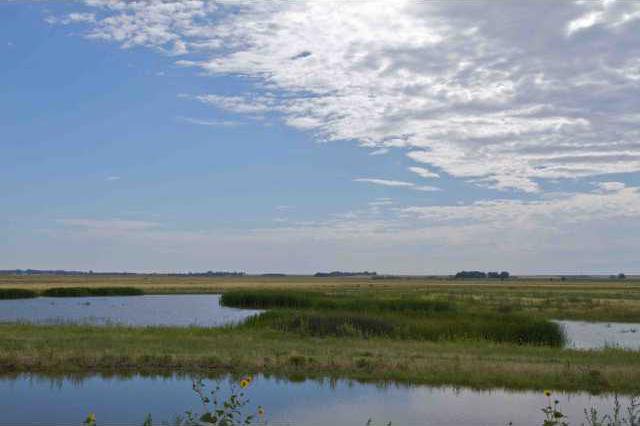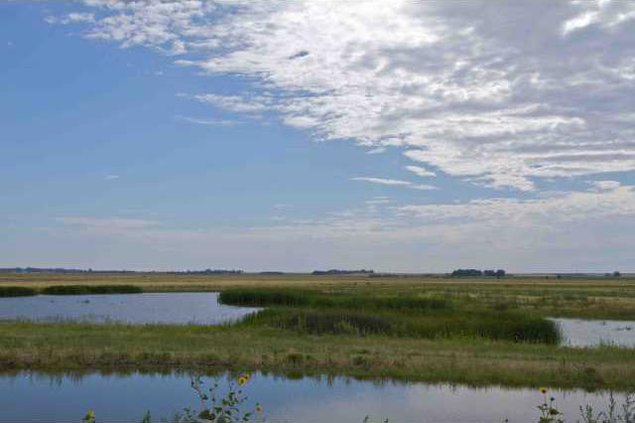Doc and I always look forward to this time of year and the changes it brings to the Bottoms. New birds migrating through, emergent plants greening, frogs singing their little hearts out. Little did I know this time of year would bring a large change for my wife and I as well? In a whirlwind of events, I was offered and accepted a position at Forest Laboratories working with Alzheimer’s Disease, Hypertension and MDD products. Sadly, this means I will no longer be working at the KWEC and this will be my last Marsh as the Education Director for FHSU. Dr. Witt and I promise to do our utmost best to keep the Musings going as long as we possibly can though. I will greatly miss all of you, your stories, and the memories we have created.
Now a perspective on the drought conditions from Dr. Witt:
Right now, our marsh is hurting. It doesn’t take long to notice that water is a scarce resource at the Bottoms. The large pool, Pool 1, is down several feet. In addition, many of the surrounding pools are dry or have little water present, mostly because water levels have simply not recovered from the harsh dry summer of last year. One cant help but fear future water levels if these dry conditions persist.
You may ask why little water is an issue? One main reason has to due with migration. The main push of birds, especially shore birds, are arriving and need food, water, and space. As it stands, many birds already appear crowded and most species have yet to arrive! I have already seen several mini dust storms at the Bottoms and the thought that crosses my mind is the great dust bowl. A wonderful book, “The Worst Hard Time” by Timothy Egan, was the best book I have read about that awful part of our history. I can even remember some of the huge dust clouds that continued to occur in my early childhood.
Despite low water levels, whooping cranes appearing at the Bottoms and Quivira. Northern shovelers, pintails, mallards, and even a pair of cinnamon teal are present and numerous at the Bottoms. Avocets and several of the sandpipers are here, with more soon to follow. Numerous flocks of pelicans are flying in and one cannot help but stare in awe of the graceful long arcs they make in the sky as they travel. One good thing has come from the drought conditions though. The limited water has forced the birds to congregate together, making it easy to find the birds and capture a lot of photographic images of them. The morning and evening light has been wonderful for getting pictures of both the birds and the scenery. Unfortunately, mosquitoes, which often seem like a type of bird, are starting to show up as well. So get out to the marsh and watch the awe inspiring process of migration before the heat gets turned up and the bugs come out in full force. Right now is primo!
Eric Giesing is the education director for FHSU at the KWEC and Dr. Dan Witt is a nature photographer/enthusiast.
MARSH MUSINGS
The thirsty marsh





